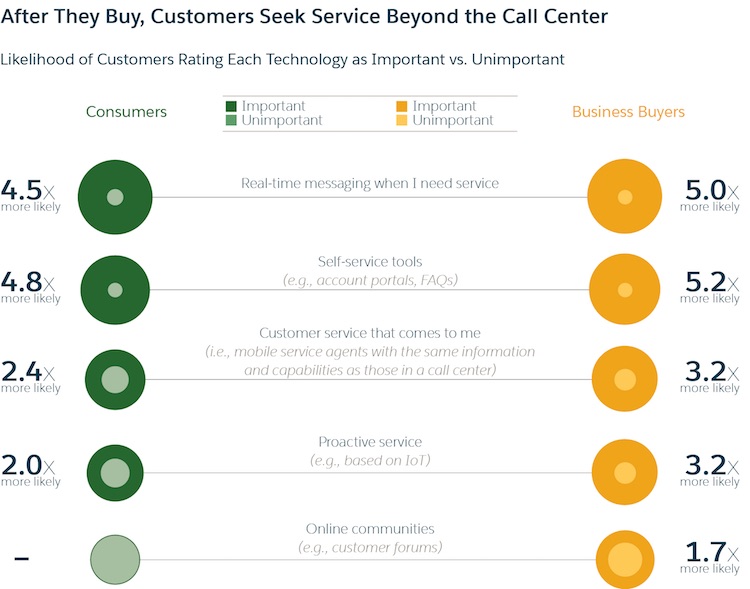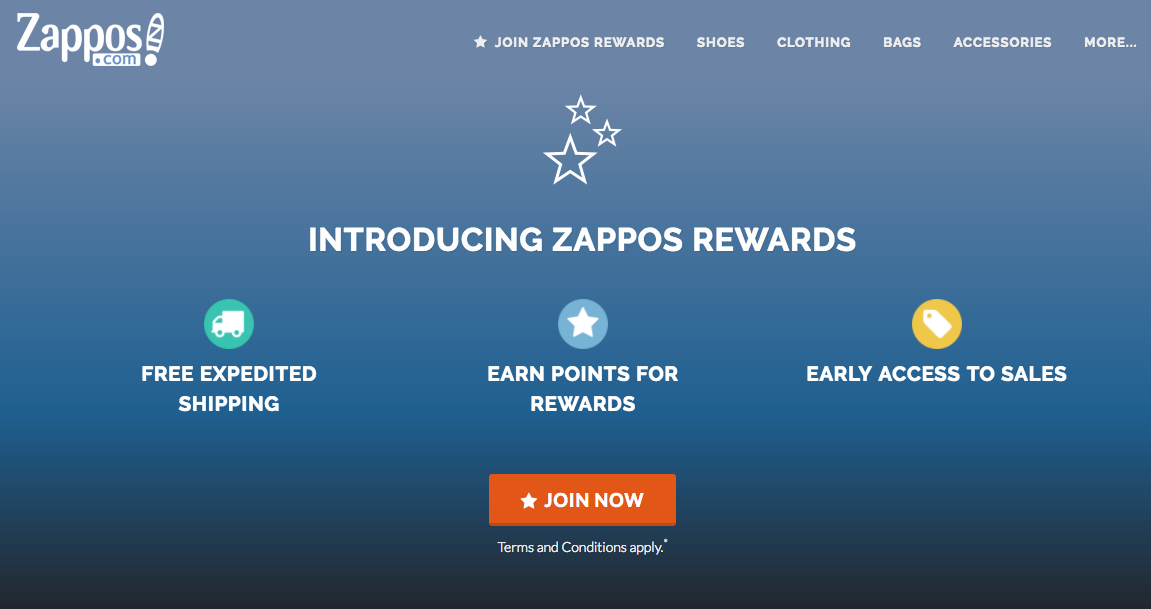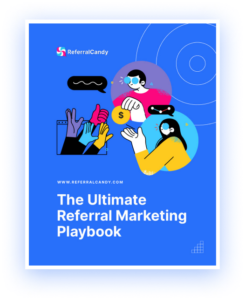How can you show that you’re a customer-centric business, rather than just paying lip service?
Click to Jump
Two research reports — “State of Service” and “State of the Connected Customer” — explain what customers expect when it comes to customer service. By asking 3500 service leaders, 6700 customers and buyers — analysts hoped to answer a few pressing questions like:
- Exactly what is ‘good customer service’ in this day and age
- How to measure good customer service experiences
- How to deliver good customer experiences
The reports shed a lot of light on what customers are thinking.

What customers want vs what Businesses by – via Salesforce.com
67% of customers say they expect more from customer service than before. That standard is only rising. Increasingly, great customer service means:
- Service should be real time
- Service that is personalized
- Service should provide a connected experience
- Built in proactivity
Next, we will look at different ways by which you can embrace customer-centeredness for your brand.
1. Offer Personalized Rewards
In a study published in the Journal of Applied Social Psychology, researchers studied the impact on tipping amounts if waiters distributed free mints.
This is how the test progressed:
- Group A waiters gave mints along with the check, making no mention of the mints. This resulted in 3% higher tips.
- Group B waiters gave two mints and asked the table if they wanted any before they left, This resulted in 14% addition in tips.
- Group C waiters gave mints, waited a while to see if mints at the table were finished and came back again and asked the table if they wanted more. This resulted in 21% higher tips.
For the final test, servers distributed mints, then went back and waited a bit to see if customers at the table had finished their mints. If the customers finished the mints, they approached the table once again and asked if they wanted more mints. This made the customer feel special and well-attended to..
The three groups of waiters provided increasing levels of personalization. As a result, the tip amount went up with the level of care or personalization exhibited.
Now you may ask me what has personalization got anything to do with loyalty building?
Here’s why personalization can be a game changer.
Research shows the average person is a member of 14 customer loyalty programs, half of which he never uses.
79% customers would only consider staying loyal to a brand if they feel the brand understands and cares for them. 56% of customers are loyal to brands who deeply understand their preferences, behaviours and interests. The verdict is clear – customers like and stay loyal to companies that provide loyalty rewards they like.
Rewards need to be attuned to customer preferences. They need to be personalized. You may imagine that since loyalty programs have been running for a while they would have have nailed personalization.
The truth? Customers aren’t getting the right level of personalization. A study covering 400 plus loyalty programs and surveying 28000 customers found that only 25% of customers are satisfied with the level of personalization offered.
That means if you choose the right loyalty rewards, you’ll have a head start on other brands.
Sephora is a great example of a brand that does this right. To members of its loyalty program, Sephora sends customized offers based on their hair or skin type. This is coupled with low stock alerts for items customers purchased before. Combined, the offers become highly personalized, catering directly to what consumers want to buy. This results in higher engagement.
95% of Sephora’s revenue is from their Beauty Insiders loyalty program which has its foundation in personalization.
2. Deliver Great Customer Service
Zappos goes above and beyond the call of duty in delivering customer service. They sent the best man free shoes the night before the wedding. All because the delivery company had messed up the location. Zappos doesn’t spend a lot on marketing. For Zappos, great customer service equals marketing.
Essentially, their philosophy revolves around taking all the money they’d have spent on paid marketing and investing the same in creating great customer experiences. At Zappos, customer service agents are encouraged to spend company money to please customers. Zappos generates a lot of new customers courtesy of word of mouth borne as a result of great customer experiences. It also creates lots of UGC for the brand.

Zappos also has a customer loyalty program, but their legendary customer service does more for brand loyalty
Another example is Slack. Slack focuses more on customer-facing metrics like the number of daily active users. The goal is to create a product that users won’t think twice before recommending it to their friends.
When in beta, Slack listened to its user feedback. They tested the product for 7 months and made changes before releasing the first version. Customer feedback is routinely at the helm of newly released features. If users wanted integrations with other apps and services they got it. The same holds true for a lot of features Slack has.
Customer-centeredness is a great approach through which you tell customers that you care about them. That their preferences are top-most priority for you. Such examples of customer-centeredness are shared far and wide. They can boost social signals to your site making it more trustworthy.
3. Recognise that Speed Of Service Is Important, But Not At the Cost Of People Skills
Customers like speedy responses but for complex queries they’d rather prefer their problem solved. The time it takes is irrelevant.
That might come off as hard to digest. We live in an impatient word full of busy people. So how can other metrics beat speed?
In a Gallup analysis the researchers found that the speed with which customers are served positively affected customer engagement and experience.
Unsurprising. No one wants to wait an entire day at the bank.
More than speed, a teller’s willingness to help a customer and courtesy were rated far higher as factors that improved customer engagement.
Customers who gave the bank high ratings on attributes such as willingness to help and courtesy were nine times more likely to be engaged.
The verdict- People skills matter more than speed.
And how does this influence loyalty?
Once again, a Gallup research found that fully engaged customers are more loyal and profitable. They spend 23% more with brands they’re loyal to.
No one wants a cold burger delivered in 2 minutes tops. They’d rather wait six minutes and have a delicious hot burger instead.
Think of the customer experience that support teams will render. Instead of prioritising and rewarding speed, you should reward those who deliver good customer experience. Don’t ask customer support agents to finish a call in 4 minutes; ask them to stay as long as the query needs solving. Instead of being cut off or
Speed by itself isn’t everything. Unless that’s the only thing the customer wants. Which in most cases isn’t true. People skills like courtesy and willingness to help are far more important.
4. Create Great Customer Experiences With Unexpected Surprises
It’s easy to just do the job. Going beyond that forges a connection that breeds loyalty.
Temkin Group’s research shows that a slight improvement in customer experience can generate an additional revenue increase of $823 million for a company with annual revenues of $1 billion over three years
Here’s an example. Subscription boxes are dime a dozen. It’s a cut throat industry. One way Trunk Club maintains loyalty in this industry is by giving customers pleasant, unexpected surprises. Each month customers get a surprise item in the box that they didn’t order. It can be an accessory or some trinket that’s relevant to their choices – and since it’s unexpected, it’s extra delightful.
HyreCar recently wrote an article on “15 things every Uber and Lyft driver should keep” . These ranged from business necessities like a change of tyres to stuff that can make the car riding experience a tad beyond the ordinary for the rider. Some of those include:
- Air fresheners
- A cookie or candy jar
- Charging cables
- First aid kit
- Water bottles to give to customers
- Cleaning supplies- napkins or tissues
- Magazines or books, local newspapers
For Lyft and Uber, the customer is trying to get from point A to B. But these extra items make a ride more enjoyable, more convenient and a delightful surprise. Each of these are examples of customer-centred thinking: “What might the customer like, but not expect to have?”
Of course, the driver who goes the extra mile gets rewarded too, with tips or higher ratings – a way of recommending the driver.
In every business you can find something extra– some little courtesy that can make the ride enjoyable for the customer.
For Lasting Loyalty, Deliver a Memorable Experience
Brands advertise incessantly to get people to remember them, or to try to build brand equity. By far the best way to forge lasting loyalty is simply to deliver a memorable experience.
Being customer-centered is one of the best things you can do for your brand. In this age of fleeting loyalties customers remember and tend to be loyal to brands who take the time to get to know them. Ask questions, listen and implement feedback and provide excellent customer service. Customers love brands that are helpful and conscious of their needs and wants.
Author bio: George is a content copywriter for brands like CrazyEgg and several key players in SaaS. Check out his work here.


